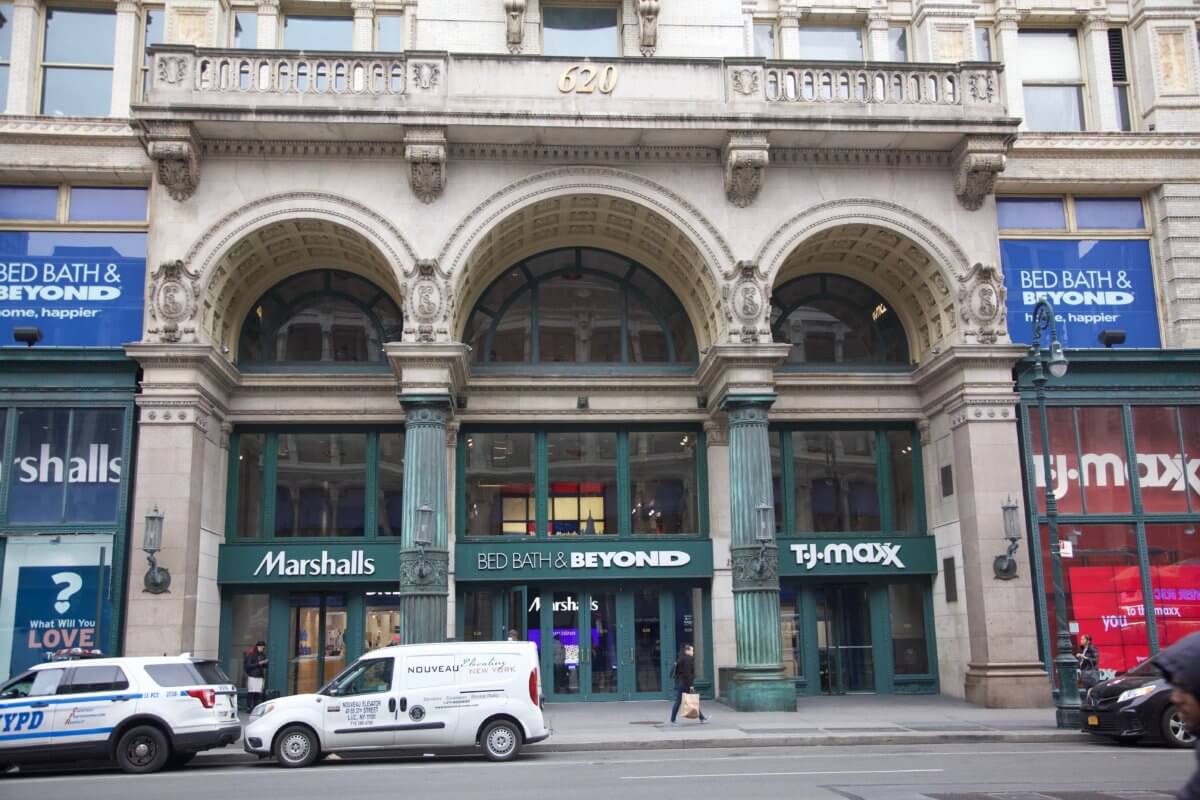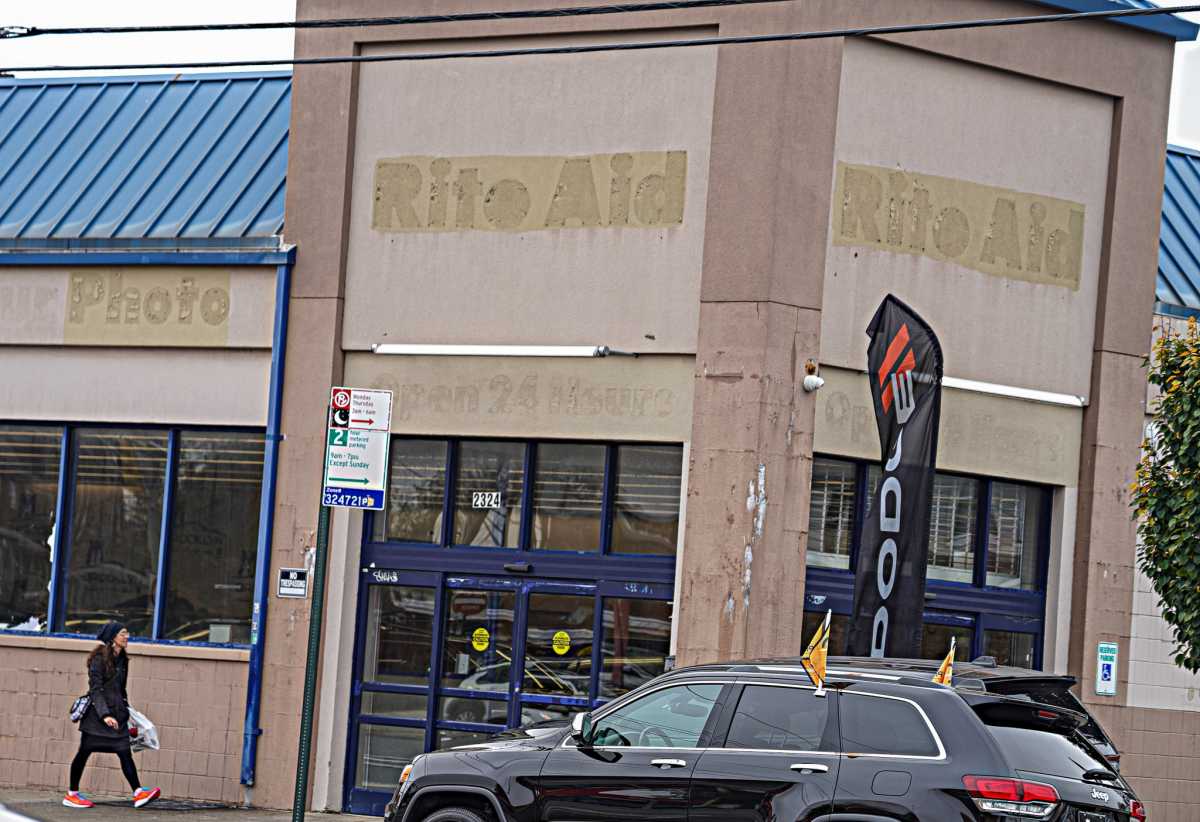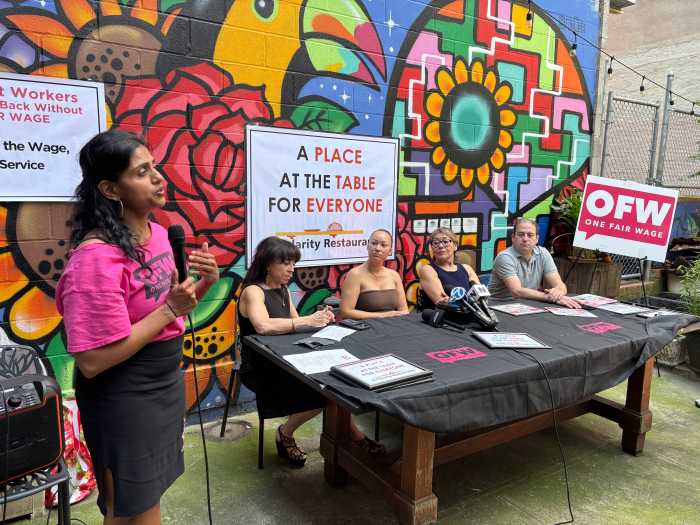National chain stores in New York City are closing down at a historic pace, according to one study.
Researchers with the non-profit Center for an Urban Future (CUF) released their latest study on the state of chain stores in New York City, which revealed a startling economic reality for national retailers that once packed bustling shopping strips across the five boroughs.
According to the analysis of brands that feature store locations nationwide, 2023 saw a 3.1% downtick in the number of national retailer outposts in the city — marking the second-steepest decline since the think tank began analyzing national chains in 2008. The only year with a bigger decline in the number of chain stores was 2020, when the COVID-19 pandemic forced many of those businesses to shutter, and customers were wary of person-to-person interaction.
Even though personal health is no longer driving customers away in droves, the prevalence of remote work and the rise of e-commerce have decimated the business viability of many brick-and-mortar stores, according to the study.
“Our 2023 State of the Chains report underscores the challenges that many national retailers are facing in New York, including hybrid work and the growth of e-commerce, and suggests that some of the changes we’ve seen to the retail market in recent years may be here to stay,” said Jonathan Bowles, the executive director of the CUF.
Borough-by-borough loss of chain stores

The CUF study shows that the number of chain stores in the city in November 2023 was around 13.8% less than the peak of late 2019, as consumers now have 1,097 less chain store options than before COVID.
That trend is true across all five boroughs, as each of them sit more than 5% below 2019 levels — but Manhattan was hit the worst.
Once filled with daily work commuters, the borough now sits comparatively empty during peak business hours — prompting chain retail brands to operate 545 fewer stores now than in 2019, representing an 18.3% decline.
Brooklyn saw a 10.9% drop, which is similar to the 11.3% drop in Queens. Bronx chain stores suffered the most outside of Manhattan, as the borough now features 13.8% less chain retail stores than it did in 2019.
Staten Island was spared, relative to the other four boroughs, as Richmond County is now home to just 5.5% fewer national brand outposts.
Which industries were hit the hardest?
While the pandemic prompted more customers to do their shopping online, thus speeding up an already-existing trend, it also gave way to online shopping in industries that were almost entirely not operational on the web — particularly pharmacies.
Pharmaceutical distributors, which are subject to strict regulation, were allowed more leeway to sling their prescriptions online during COVID, and customers have largely not returned to the stores that dominated the previous decade. Most notably, Rite Aid shuttered more than half of its store locations (55 in total) since 2019, while Duane Reade had closed 16 stores and CVS reduced its footprint by four stores.
Outside of the legal drug industry, cell phone stores marked the other biggest source of the decline in retail stores in the Big Apple, according to the study.
T-Mobile, for example, closed 88 stores, while AT&T saw 18 closures and Verizon had 9 closures.
After pharmacies and cell phone stores, merchandise sellers (which includes stores selling clothes, shoes, and luggage), was the third biggest industry responsible for the drop in brick-and-mortar stores.
What now?
The repercussions of retail store decline in New York are sure to ripple throughout the city’s economy for years to come.
In addition to the lost tax revenue generated by the stores in previous years, which evaporates along with their “Open” signs, the trend is a troubling one for jobs.
Thousands of New Yorkers were historically able to find solid work at national chain stores, but as those locations shuttered, it leaves far fewer opportunities for employment.
That devastating fact comes in addition to the other economic ramifications of the pandemic — such as a decline in population, and a fractured real estate industry.
But, there’s very little anyone can do to stop the bleeding, said the researchers.
“After two years of modest growth, we saw chain store closures across the five boroughs, with most national retailers not coming close to reaching their pre-pandemic levels,” warned Bowles.



































